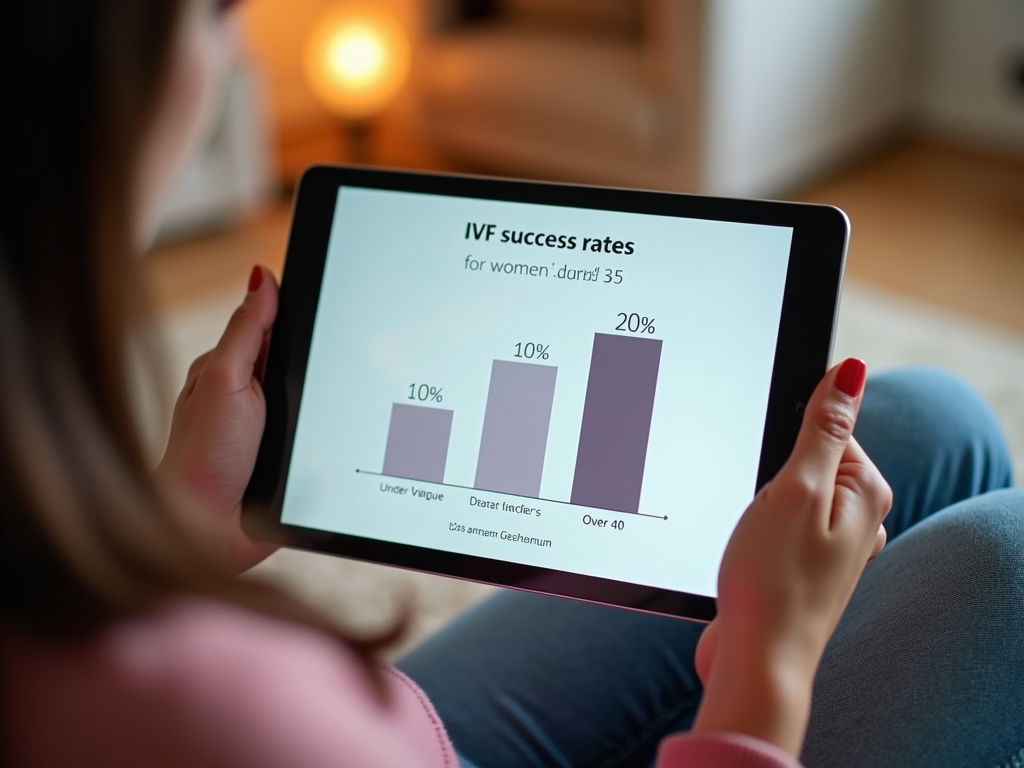Understanding Fertility Clinic Financing Options: A Comprehensive Guide
April 30, 2025, 5:24 p.m.
Overview
Fertility clinics offer hope to those facing infertility, providing treatments like IVF to help build families. However, these services can be expensive. This guide dives into fertility clinic financing options, offering clear, actionable ways to manage costs and make your dream of parenthood more achievable.
What Are Fertility Clinics and Why Financing Matters
Fertility clinics are medical centers specializing in helping people who struggle with infertility. They provide treatments like in vitro fertilization (IVF), where eggs and sperm are combined outside the body, and intrauterine insemination (IUI), a simpler procedure. These treatments can change lives, but the costs often surprise people. A single IVF cycle might run $12,000 or more, and that’s before extra expenses like medications.

For many, infertility is already an emotional rollercoaster. Adding financial stress makes it tougher. I’ve spoken to friends who felt overwhelmed by the price tags, unsure how to move forward. That’s why understanding fertility clinic financing options is so important—it’s about finding a way to keep hope alive without breaking the bank.
Common Fertility Treatments and Their Costs
To plan financing, you need to know what you’re paying for. IVF is the big one—highly effective but pricey. It can cost $12,000 to $15,000 per cycle, plus $3,000 to $5,000 for meds. Success isn’t guaranteed, so some need multiple tries. According to the CDC, about 33% of IVF cycles in women under 35 lead to a live birth.

Then there’s IUI, which is less invasive and costs $300 to $1,000 per cycle. It’s cheaper, but success rates hover around 10-20%. Egg freezing, for those planning ahead, might set you back $6,000 to $10,000. Knowing these numbers helps you see why financing matters—most people can’t pay out of pocket.
| Treatment | What It Is | Average Cost | Success Rate |
|---|---|---|---|
| IVF | Eggs fertilized in a lab | $12,000-$15,000 | 33% under 35 |
| IUI | Sperm placed in uterus | $300-$1,000 | 10-20% |
| Egg Freezing | Eggs stored for later | $6,000-$10,000 | Varies |

Exploring Fertility Clinic Financing Options
Thankfully, there are ways to make these treatments more affordable. Let’s break down the main options so you can find what fits your situation.
Insurance Coverage
Start with your insurance. Some plans cover parts of fertility treatments, but it’s hit or miss. In the U.S., 19 states have laws requiring some infertility coverage—check Resolve to see if yours is one. Even without state rules, big employers like tech companies sometimes offer IVF benefits. Ask HR what’s covered; it could save you thousands.

A friend of mine found out her plan covered diagnostics but not IVF itself. It’s a start, but you’ll need to dig into the details. Call your insurer and get specifics—don’t assume anything.
Loans and Credit
If insurance falls short, loans can bridge the gap. Some companies, like Springstone or LendingClub, offer fertility-specific loans with rates as low as 5%. Personal loans or credit cards work too, but watch out for high interest—sometimes 15% or more. I’ve seen couples crunch numbers to keep payments manageable, and it’s worth shopping around.

Grants and Scholarships
Grants are like free money, but they’re tricky to get. Organizations like Baby Quest Foundation give out funds based on need or story. It’s competitive—one couple I know applied to five before landing $5,000. Look online, apply early, and tell your story honestly.
Clinic Payment Plans
Many fertility clinics offer in-house financing. Think monthly payments instead of one lump sum. Some have no interest if you pay on time, which beats credit card debt. Call your clinic—ask what they’ve got. It’s a relief knowing the place you trust can help with costs too.

Crowdfunding Support
Crowdfunding’s another route. Platforms like GoFundMe let you share your journey and ask for help. A colleague raised $8,000 this way, with friends and even strangers chipping in. It’s not for everyone—going public takes guts—but it can work.
How to Pick the Right Option
Choosing feels overwhelming, but it doesn’t have to be. Here’s what to think about: - Cost vs. Benefit: Loans might mean debt, but grants are free if you qualify. - Your Budget: Can you handle monthly payments? - Timeline: Crowdfunding takes time; clinic plans might start right away.

Talk to someone—a financial advisor or even a friend who’s been through it. I’ve learned from others that mixing options, like insurance plus a small loan, can spread the load. Don’t rush; the right plan makes the process less stressful.
Final Thoughts
Infertility is tough, and the costs can feel like a mountain. But fertility clinic financing options—like insurance, loans, or grants—can lighten the load. You’re not alone in this; millions navigate it every year. Take it step by step, explore what’s out there, and lean on support. Your family-building dream is worth it, and there’s a way to make it happen.